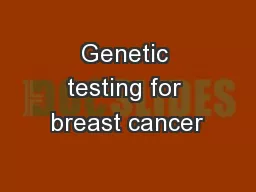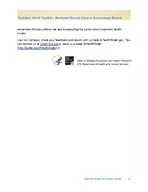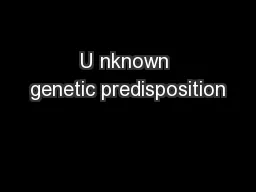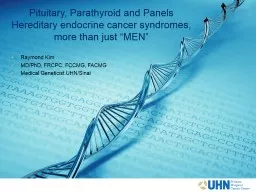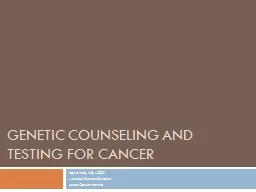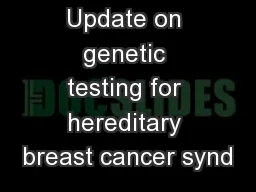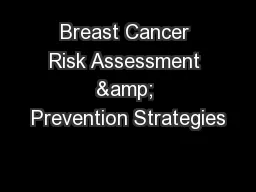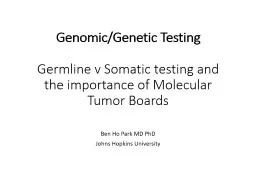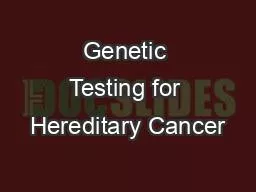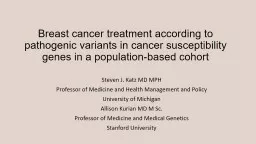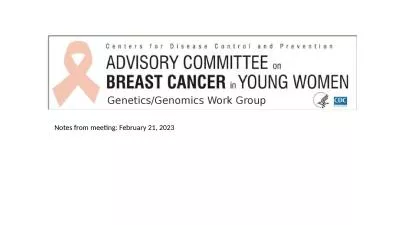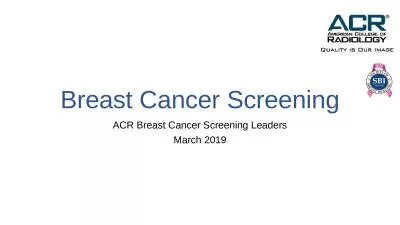PPT-Genetic testing for breast cancer
Author : faustina-dinatale | Published Date : 2017-09-19
Susan M Domchek MD Basser Professor of Oncology University of Pennsylvania Sex Age Family history Depends on specific of family history Depends on whether there
Presentation Embed Code
Download Presentation
Download Presentation The PPT/PDF document "Genetic testing for breast cancer" is the property of its rightful owner. Permission is granted to download and print the materials on this website for personal, non-commercial use only, and to display it on your personal computer provided you do not modify the materials and that you retain all copyright notices contained in the materials. By downloading content from our website, you accept the terms of this agreement.
Genetic testing for breast cancer: Transcript
Download Rules Of Document
"Genetic testing for breast cancer"The content belongs to its owner. You may download and print it for personal use, without modification, and keep all copyright notices. By downloading, you agree to these terms.
Related Documents

